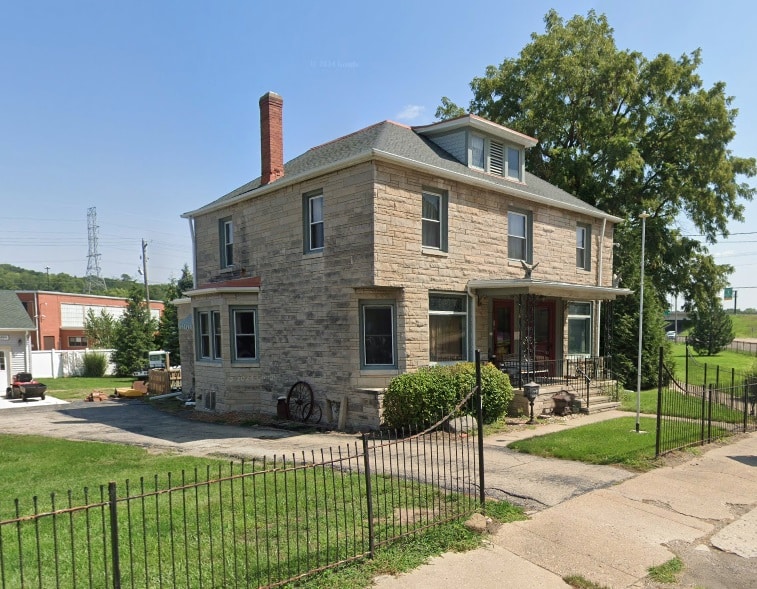Earlier this year, “From the Local History Room” explored one of Abraham Lincoln’s historically significant legal cases, involving an African-American woman from Pekin named Nance Legins-Costley, who secured her freedom through the 1841 case of Bailey v. Cromwell which Lincoln successfully argued before the Illinois Supreme Court.
That, of course, was but one of the many local cases in which Lincoln was retained as an attorney. As is well known in the local area, Lincoln’s career as a central Illinois attorney frequently brought him to Tazewell County’s courthouses in Tremont and Pekin, and many of the pioneer settlers of Pekin and Tazewell County had personal dealings with Lincoln, often because he was legal counsel for one side or the other in a legal dispute. In a pair of related Tazewell County cases, Lincoln was the attorney first for one side and afterwards for the other.
This pair of cases are Hall v. Perkins and Perkins v. Hall, actions pertaining to disputes over the sale of land, promissory notes, breach of contract, and debt collection which began in 1841 and concluded in 1853. Showing up in these court documents, which are transcribed and discussed in chapter 5 of volume one of a four-volume set, “The Papers of Abraham Lincoln: Legal Documents and Cases,” are the names of Tazewell County or Pekin pioneers Samuel Hall, Elisha Perkins, William Wilmot, Samuel Baily, and Benjamin S. Prettyman. Elisha Perkins, founder of the now vanished town of Circleville south of Pekin, one of the principals in these cases, was a brother of Pekin co-founder Isaac Perkins.

Here’s the background of these cases as explained by “The Papers of Abraham Lincoln,” vol. 1, ch. 5, pp.60-61:
“In 1838, Samuel Hall was looking for land to purchase in Tazewell County, Illinois. Elisha M. Perkins had acquired a substantial amount of property there in the 1830s and was in the process of selling much of it. On December 27, 1838, Perkins sold about sixty-five acres in Tazewell County and two town blocks of Circleville, Illinois, to Hall for $1,150. Hall agreed to give Perkins $650 in cash and two promissory notes – one for $200 due in one year and one for $300 due in two years. To guarantee that he would give Hall a deed to the property within one year, Perkins also gave Hall a bond. According to the terms of the bond, if Perkins failed to deliver the deed, he would have to pay Hall a $2,500 penalty.
“Eighteen months later, Hall had not paid either of his promissory notes, and Perkins had not given Hall a deed for the land. In May 1840, Hall sued Perkins in an action of attachment to obtain the $2,500 penalty but dismissed the case one year later in April 1841. At the next term of court, in September 1841, Perkins retained William H. Wilmot and Samuel P. Baily and sued Hall in the Tazewell County Circuit Court. Perkins sued Hall in an action of assumpsit to recover the two promissory notes and $237.75 on a separate account.”
An action of “assumpsit” refers to an attempt to recover damages for a failed contract that is not under seal. “The Papers of Abraham Lincoln” says “assumpsit” was the most commonly used legal action in pre-Civil War America. The suits and counter suits of Perkins and Hall, however, are remarkable because of how long they dragged on in the courts, even coming before the Illinois Supreme Court. As “The Papers of Abraham Lincoln” says (vol. 1, ch. 5, pp.87-88):
“While most debt-related lawsuits concerning promissory notes ended within a court term or two, the legal controversy between Perkins and Hall lasted slightly more than fourteen years. In its length and complexity, the dispute illuminates the many different options open to attorneys pleading . . .
“Lincoln’s role was also unique in this series of lawsuits. While Lincoln occasionally argued opposing sides of issues in different lawsuit, in the several cases involving Perkins and Hall and the same promissory notes, he represented Perkins in the circuit court and supreme court in the 1840s, then represented Hall in the circuit court in the 1850s. In both cases, Lincoln won and lost. In the 1840s case, Lincoln helped to secure a favorable judgment for Perkins but lost the appeal at the Illinois Supreme Court. In the 1850s case, he lost a sizable judgment as Hall’s attorney but successfully argued for a new trial and helped to mitigate the size of the judgment against his client.”










